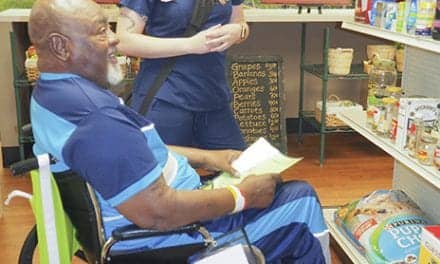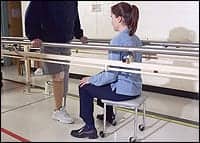A team of researchers at the Technical University of Catalonia (UPC), Barcelona, Spain, has designed an intelligent walker (i-Walker) that goes a step beyond conventional walkers—communicating with users, thinking for itself, and reacting to the environment.
The device can understand a set of voice commands and can be activated by means of simple verbal instructions given by the user (eg "take me to the kitchen"). To do this, it includes elements for independent movement and a personalized intelligent software agent.
The tool is based on intelligent multiagent-systems technology, which are personal agents or software systems that observe and interact with their surroundings independently, proactively, and rationally—and have the ability to learn and communicate. It adapts to the specific assistance requirements of people who use it and enhances their autonomy by helping them to make decisions that are usually beyond their scope due to physical, mobility, or cognitive obstacles imposed by ageing or their illness.
The i-Walker can be used for medical rehabilitation, as it can help in the recovery and strengthening of motor skills by allowing the amount of aid provided to the user to be adjusted under medical supervision. Parameters such as the effort made by the user in walking, the distance traveled, and the calories burned during movement are recorded and measured by the walker. The system uses an accelerometer to detect possible falls, correct itineraries and turning angles, and control braking.
Other welfare devices are also in development, such as a semiautonomous wheelchair (Roland III) capable of operating indoors and outdoors, and a semiautomatic platform (Spherik) based on a new type of spherical wheel designed for movement in small spaces.
The three mobile systems—walker, wheelchair, and platform—can detect the position of the patient in the home and in other known environments such as hospitals and primary-care centers, as they include a special monitoring system. They can also adapt their autonomy to the requirements of users by means of a cognitive model based on interpretation of the information provided by the biosensors and on the person’s disability profiles provided by a medical team. This allows them to provide the carers with continuous information on the user’s state of health.
[Source: Science Daily]




